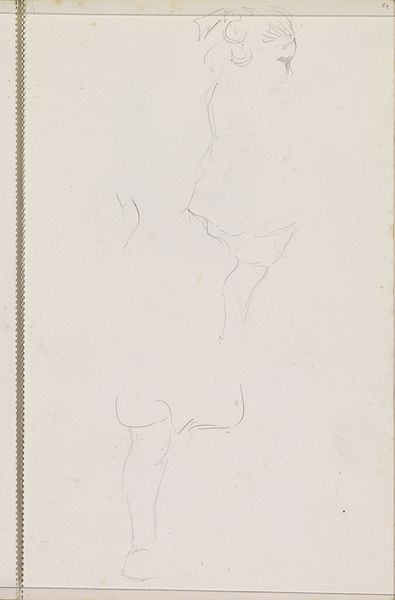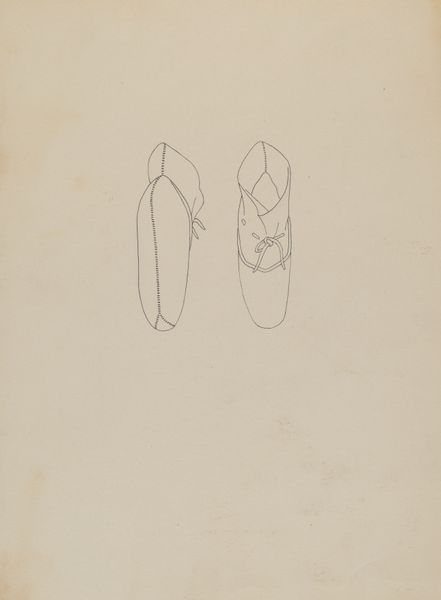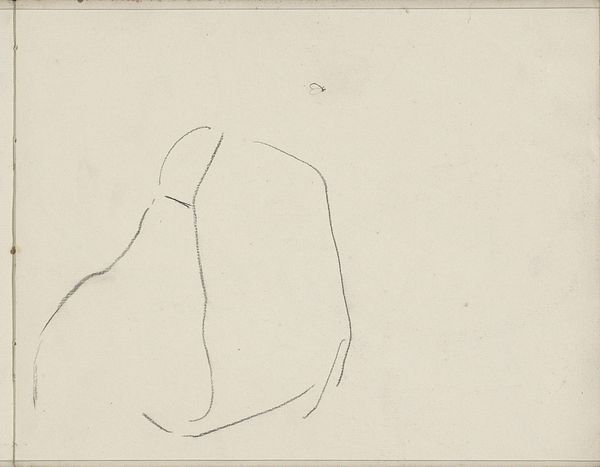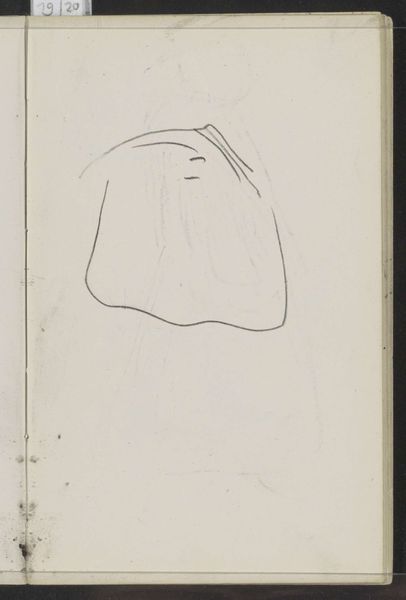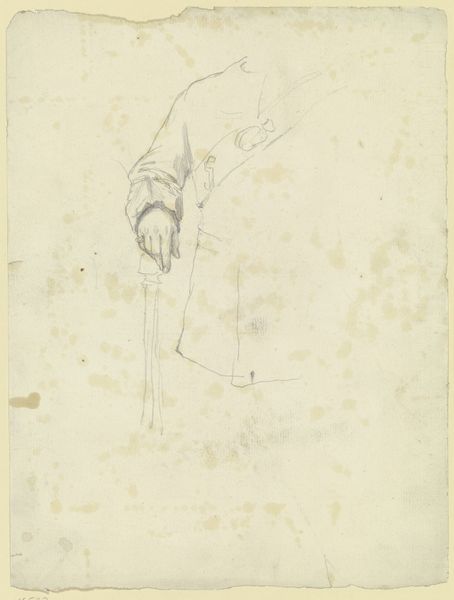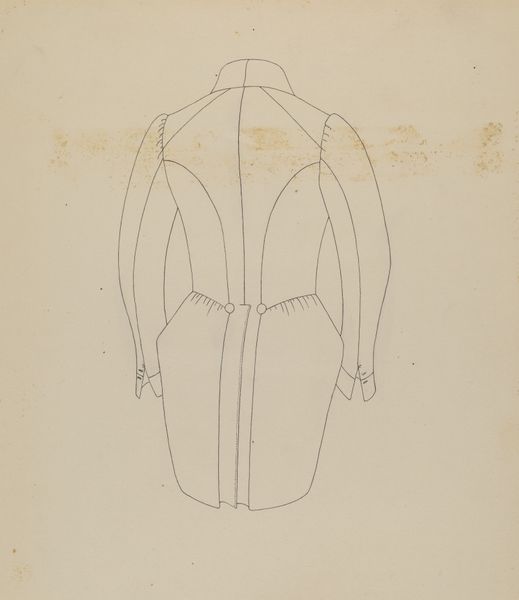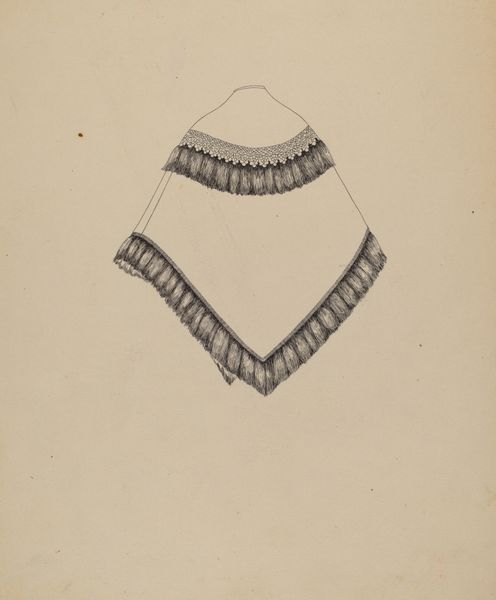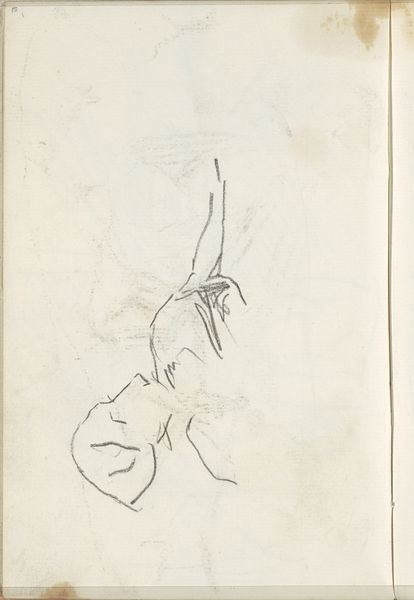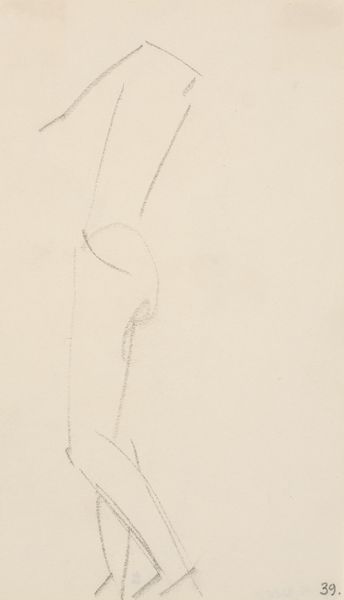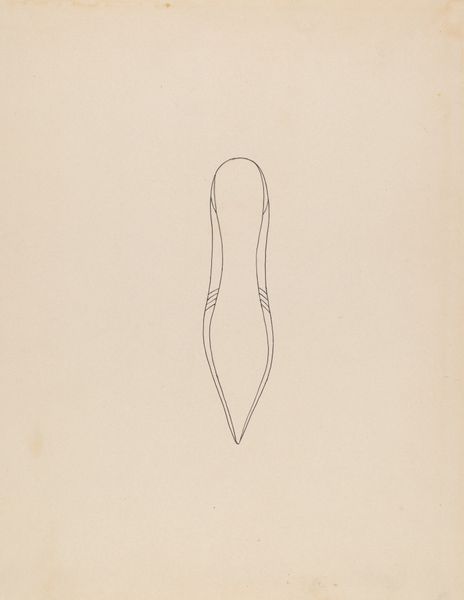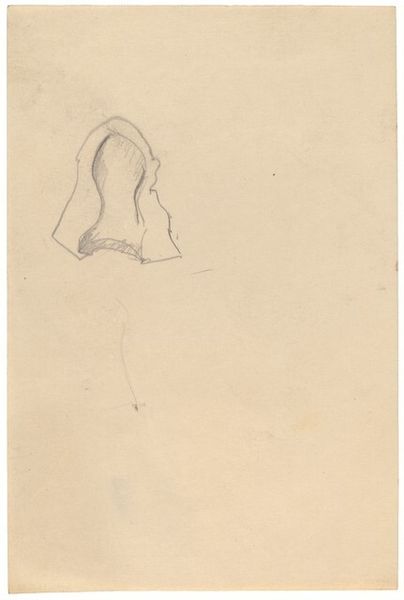
drawing, paper, pencil
#
drawing
#
pencil sketch
#
paper
#
form
#
pencil
#
line
Dimensions: overall: 27.3 x 22.6 cm (10 3/4 x 8 7/8 in.)
Copyright: National Gallery of Art: CC0 1.0
Editor: This is "Basque," a pencil drawing on paper from around 1937 by Mae A. Clarke. It looks like a sketch of a jacket, really emphasizing the sculptural form of the garment. What do you make of it? Curator: The image offers a unique window into the development of fashion as a reflection of social change during that time. The focus on form, captured with such simple lines, really speaks to an interest in modernism. Editor: Modernism in fashion? How so? Curator: Think about it. After the first World War, silhouettes became less restrictive, liberating women’s bodies. A sketch like this highlights that evolving relationship between clothing and identity. Why do you think the artist chose to isolate the garment? Editor: Maybe to draw attention to its abstract qualities? Like a sculpture, removed from the body. Curator: Precisely! This garment becomes an object worthy of study. Its presentation—isolated on the page—elevates it beyond mere clothing. In the 30s, designers gained notoriety. Think about the rise of "fashion houses" and designer names becoming publicly known as the celebrity started taking shape. The date is relevant here, think about the Depression, then the prelude to WWII. Fashion as industry was being established and publicized. Editor: So this isn’t just a drawing of a jacket; it's a comment on fashion's role in society at the time? Curator: Exactly. Consider also who the likely audience for this would be. Was it just personal or would it be shopped around for someone to produce. Editor: That gives me a lot to consider! I was so focused on the lines themselves, and wasn't thinking of a broader societal impact, like the rise of celebrity culture, that’s a good prompt to consider in looking at work from this time period.
Comments
No comments
Be the first to comment and join the conversation on the ultimate creative platform.
